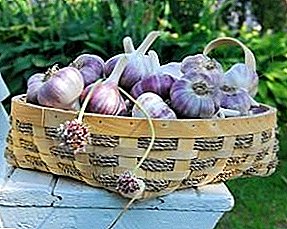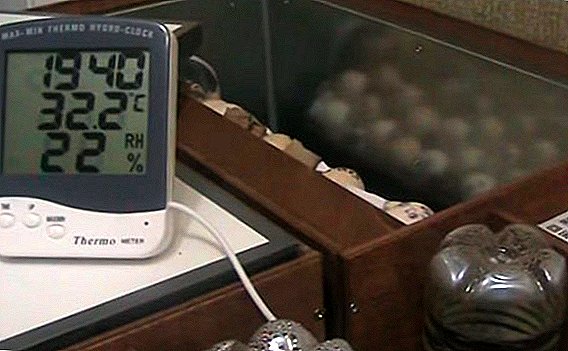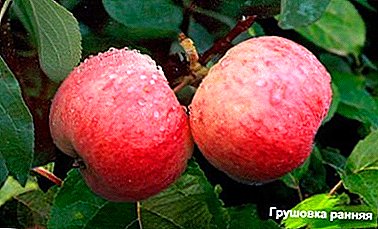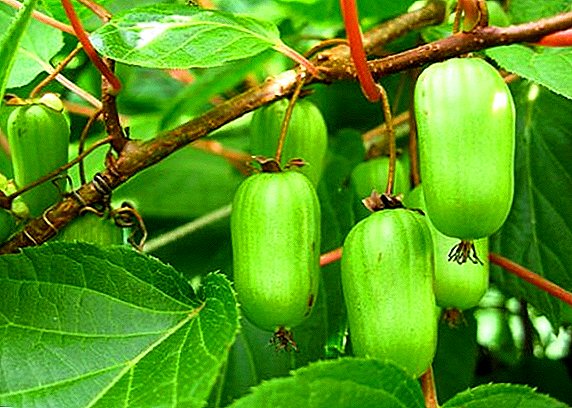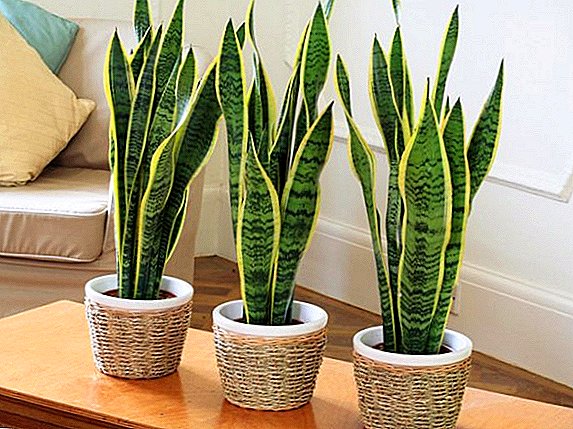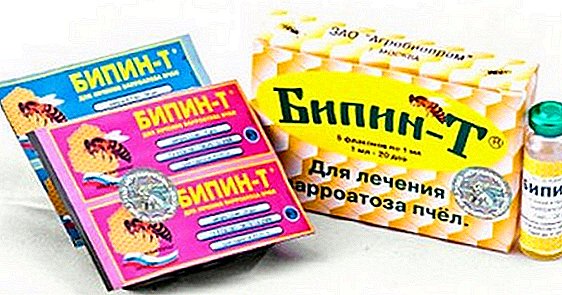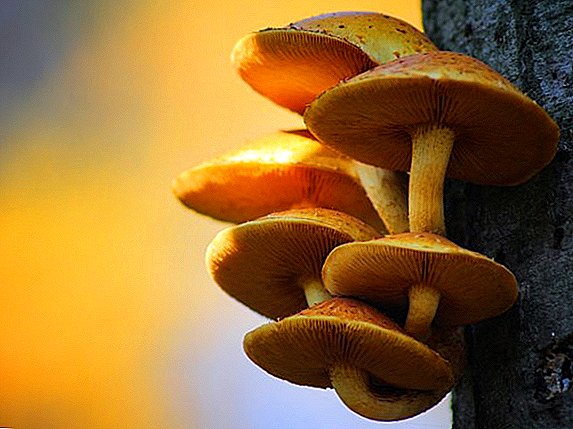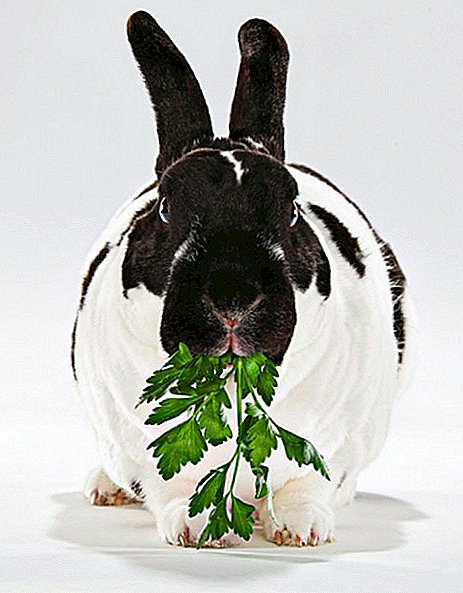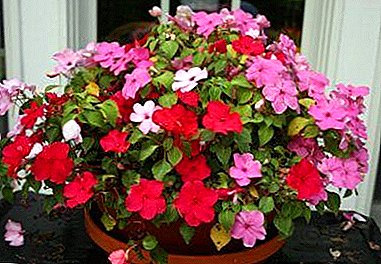
Balsam - a widely known plant. Practically there is no such city, which street beds would not be decorated with bright and effective flowers of this plant.
Different types of this flower can be seen in the florists' indoor plants collection. The simplest, most affordable, and popular breeding method for any balsam variety is seed sowing.
Next, you will learn about the features of growing indoor and garden plants in this way, as well as how the flower seeds look in the photo.
Description of plant seeds with photos
After pollination of a balsam (natural or artificial), a green fruit appears in place of the flower, which, as it ripens, turns into a white-transparent oblong box with small seeds, similar to dust. This box opens from any touch, so it is very difficult to collect the seed.



Features of growing at home
Planting dates
Balsam is characterized by a short growing season: in order for the plant to actively bloom in the summer, it should be sown in March - May. Experienced growers sow a flower in several waves with the aim of its constant flowering throughout the year.
The soil
Before sowing seeds, the substrate must be disinfected with fungicides, solution of potassium permanganate or thermally. As a drainage, it is best to use expanded clay, which for the purpose of disinfection should be washed with plenty of running water. For better seed germination, it is recommended to sift the soil.
Collection
How to collect the seeds? The best time to harvest is early morning, when the fruit is still a little wet. Fingertips need to gently hold the seed box, so as not to lose the contents. For the prevention of arbitrary spilling of seeds into the ground, an unripe fruit can be tied with gauze or cloth.
After the seeds have been harvested, they must be dried outdoors. (but without direct sunlight on them) at a temperature of + 30C. You can store for 8 years in a paper bag. Before sowing, they need to be pre-treated with a weak solution of potassium permanganate (immerse in liquid for 10 minutes), then soak in warm water for a day.
Landing
- When sowing seeds, the bottom of the tank is filled up with 2 cm of expanded clay, the rest of the space - with the substrate. It is necessary to leave some space in order to then freely water the seedlings, avoiding the overflow of water over the edge of the container.
- The surface of the soil is irrigated with water from a spray bottle. The swollen seeds are distributed over the top layer of the substrate: you should try to spread them at a distance of 2-4 cm from each other (an ordinary toothpick can help).
 Seeds are not deepened, but slightly priprashivayutsya sifted soil or sand by 4 -5 mm.
Seeds are not deepened, but slightly priprashivayutsya sifted soil or sand by 4 -5 mm.- Next, they need to again gently moisten with a spray.
- The box should be covered with glass or plastic wrap, you can simply put in a package of suitable size. The first shoots will appear in 2 - 3 weeks.
The dive is performed as follows: separate the seedling with a stick (pencil), remove it from the previously poured soil, make a small depression in the pot and lower it, sprinkling it with earth to the point of growth.
When a balsam is transplanted to a permanent place (pot or soil), the transshipment method is used: the young plant is removed from the container and, without shaking off an earthy clod, is placed in a new well.
Reference. If the seedlings are too long, they can be buried deeper into the ground when diving.
Choosing a pot
For sowing and growing balsam seeds, a wide container will fit, the wall height of which is no more than 10 cm. There should be drainage holes at the bottom of the tank. If such a box is not purchased, you can use a plastic container from under the food. After picking, seedlings are often seated in plastic cups, in which a drainage hole is made. The bottom of the cups is necessarily covered with a layer of expanded clay.
When planting balsam in a permanent place, you can use a pot of any material: plastic, clay, ceramics. It is important that he always had a hole to drain excess water, and he was not too voluminous. Otherwise, the young plant will develop roots and foliage, but not flowers. The pot for begonias should be tight.
What kind of soil is suitable?
For balsamine suitable low acid soil with a loose, permeable texture. You can buy ready-made substrate in the store, you can independently mix 1 part of garden soil, 1 part of coarse sand, 1 part of vermiculite, 2 parts of peat. Some growers use seedless mixture for seedlings (2 parts of peat with 1 part of sand or vermiculite).
Perlite and vermiculite - foamed and milled rock. Perlite makes the earth loose, and vermiculite protects the plant from overheating and overcooling.
Aftercare
 After the seed box has been covered with the greenhouse, it is placed in a light (but without direct sunlight) warm place (recommended temperature of keeping is + 22С - + 25С). In cloudy weather or in the early morning and late evening, seedlings are better to illuminate with phytolamp, otherwise their development will be disturbed. What kind of environmental conditions are considered ideal for a balsam; how to care for him at home can be found here.
After the seed box has been covered with the greenhouse, it is placed in a light (but without direct sunlight) warm place (recommended temperature of keeping is + 22С - + 25С). In cloudy weather or in the early morning and late evening, seedlings are better to illuminate with phytolamp, otherwise their development will be disturbed. What kind of environmental conditions are considered ideal for a balsam; how to care for him at home can be found here.
An important condition for germination of seedlings is high humidity, which is provided by the systematic moistening of the top layer of the soil with a spray gun.
Do not forget about the "airing" greenhouses: after 5 days from the date of disembarkation, it must be opened daily in the morning and evening for 10 minutes at first, then for a longer time.
When the seedlings grow to 1.5 cm, they can be dived, which is done to ensure that the seedling has the necessary feeding area, a developed root system capable of providing the plant with nutrients from the soil. And a week after the picking, you should pinch the tops. This will cause the development of lateral shoots, which will affect the appearance of the balsam.
Planting seedlings of a plant from common dishes into individual containers is traditionally called a dive. In this case, the final part of the taproot is necessarily removed during this process. This is done in order to stimulate the branching of the root system. Pinching plants - a way to achieve decorative bush by forming a crown of the selected shape.
How to water?
After a dive, it is necessary to change the irrigation regime: instead of irrigation and drip irrigation, you should use the method of irrigation in the pan daily, which will have a beneficial effect on the development of the root system of the seedling.
When the balsam is transplanted to a permanent place, it is necessary to ensure that the soil is constantly wet. But also the stagnation of moisture can not be allowed in order to prevent rotting of the roots and the appearance of infections, diseases and pests.
How to water and feed the plant to admire the flowering for a long time, you can learn in our material.
rules
If you water from a watering can, then the strong pressure of the water can dislodge the still weak seedling root system, so watering after removing the greenhouse should be done carefully: either irrigating the seedlings from a spray bottle or using drip irrigation technology. Regular watering - the top layer of soil should always be wet. Water should be at room temperature or a degree - two higher.
Differences in the reproduction of garden and indoor flower
 For planting in the open ground in the summertime suitable annual balsams, Perennials should be selected for home cultivation.
For planting in the open ground in the summertime suitable annual balsams, Perennials should be selected for home cultivation.
Garden balsam immediately after frost can be sown directly into the ground, but be sure to cover the planting area with film or glass.
If, however, sowing and diving was carried out in a premise, then in May you can start “hardening” of young saplings: tanks with young balsams are taken out on the street every day. Such hardening lasts at least 2 weeks. At about the end of May, plants planted in March can be transplanted into permanent flowerpots, or into open ground.
Garden balsam saplings are planted in open ground at a distance of 20-30 cm from each other, the soil can be fertilized with humus, and immediately after transplanting the plants are watered.
Despite some efforts to germinate, dive shoots, seed multiplication method is quite effective and simple. It is enough to buy high-quality seeds of the favorite balsam variety, sow them and grow them, observing all the requirements, and the pleasure of a beautifully flowering plant is guaranteed. Now you know how to grow balsam from seeds at home.
- Features and rules for breeding balsam cuttings at home.
- When and how to produce balsam reproduction and what problems arise?


 Seeds are not deepened, but slightly priprashivayutsya sifted soil or sand by 4 -5 mm.
Seeds are not deepened, but slightly priprashivayutsya sifted soil or sand by 4 -5 mm.